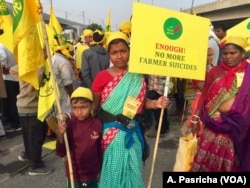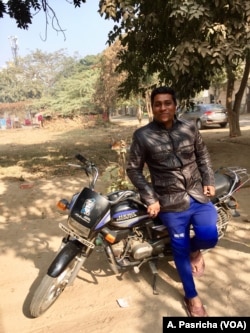Several months ago, Indian Prime Minister Narendra Modi was considered unbeatable and his Bharatiya Janata Party a sure frontrunner in general elections that are months away. But after the opposition Congress Party snatched some of the party’s key bastions in state polls, he enters 2019 facing questions on whether the BJP can take victory for granted.
Political analysts point out that the defeats in three states – Madhya Pradesh, Rajasthan and Chhattisgarh, have dented Modi’s image as a vote-catcher. The party’s star campaigner, he had helped the BJP cement victories in as many as 13 states after his spectacular victory in 2014.
But with the three heartland states slipping out of the BJP’s hold in December, Modi no longer seems invincible. “The winds of change have started to blow in the Hindi heartland. Even if the Modi magic remains, it will not be as bright as it was in 2014,” says Neerja Chowdhury, an independent political analyst. The losses of these states are significant because along with a clutch of northern states, they hold the key to political power at the national level.
The disenchantment cuts across rural and urban areas and stems from the popular perception that the development agenda on which Modi swept to power – more jobs, good governance and an economic boom, failed to bring the transformation he promised. And in a country where a million people enter the workforce every year, the aspirations of many young people remain unfulfilled.
Twenty-four-year-old Akash Kumar in the business hub of Gurgaon is among the tens of thousands of young voters who helped secure a victory for Modi, hoping that his vote would herald change. “He had promised to create new opportunities for people like me, give houses to low-income groups, lower the cost of living, but I have seen no benefits,” says Kumar, who earns about $300 a month working as a field agent in a real estate firm. His income has not increased much in recent years and a new job has been difficult to come by - although economic growth numbers have improved, the creation of new jobs remains a challenge.
The picture is not much brighter in India’s vast countryside where agriculture supports more than half the population. 2018 witnessed a surge of protests by angry farmers who say they are hurt by low prices for crop produce.
Farm analysts point to the recent crash in prices of onions and potatoes due to a glut in production that has angered farmers in two of the country’s largest states, Maharashtra and Uttar Pradesh.
Tens of thousands of farmers poured into New Delhi's streets in November -- it was the fourth protest this year. Huge protests also took place in cities like Mumbai, highlighting rural distress.
“Clearly, the rural anger is translating into electoral verdict,” according to farm analyst Devinder Sharma. He says the blame cannot be attributed directly to only the BJP government. “This is an accumulated anger over the past few decades. For four decades, the farm income has remained static. So whichever government is in power will have to face the music.”
Analysts point out that the realization that it has not been able to fulfill expectations has prompted BJP to move away from earlier promises of ushering in “good days” to promoting Modi as a leader who has “good intentions.”
“It’s a very interesting shift that the BJP has made in terms of its campaign slogan. And that reflects the unease the party faces in not having been able to achieve or come close to the promises that you made in 2014,” according to Sandeep Shastri, a political analyst at Jain University at Bengaluru.
BJP leaders maintain that their recent losses would not have any bearing on national elections, arguing that state elections are fought on local issues. The officials say they are eyeing gains in areas beyond party strongholds to make up for losses in traditional bases.
The government is also taking steps to placate rural anger and is soon expected to announce new measures to address some of the farmers' grievances.
Political analysts also point out that although Modi appears more vulnerable, he still remains the country’s most credible leader. The reason: he faces a divided and fractured opposition. The Congress Party, which received a boost with its recent victories, is trying to cobble together an alliance with regional parties to take on Modi. But it has much ground to make up: in 2014 it had won just 44 seats in the lower house of parliament compared to the BJP’s 282 and the Congress Party's efforts to unify opposition parties have made a slow start.
“Beyond doubt there is much more of a challenge for the party and for him,” says analyst Shastri, referring to the BJP. But he points out that “the capacity to bounce back and make up lost space seems to be much more with the BJP than with the opposition, simply because of the momentum they have garnered since 2014.”


